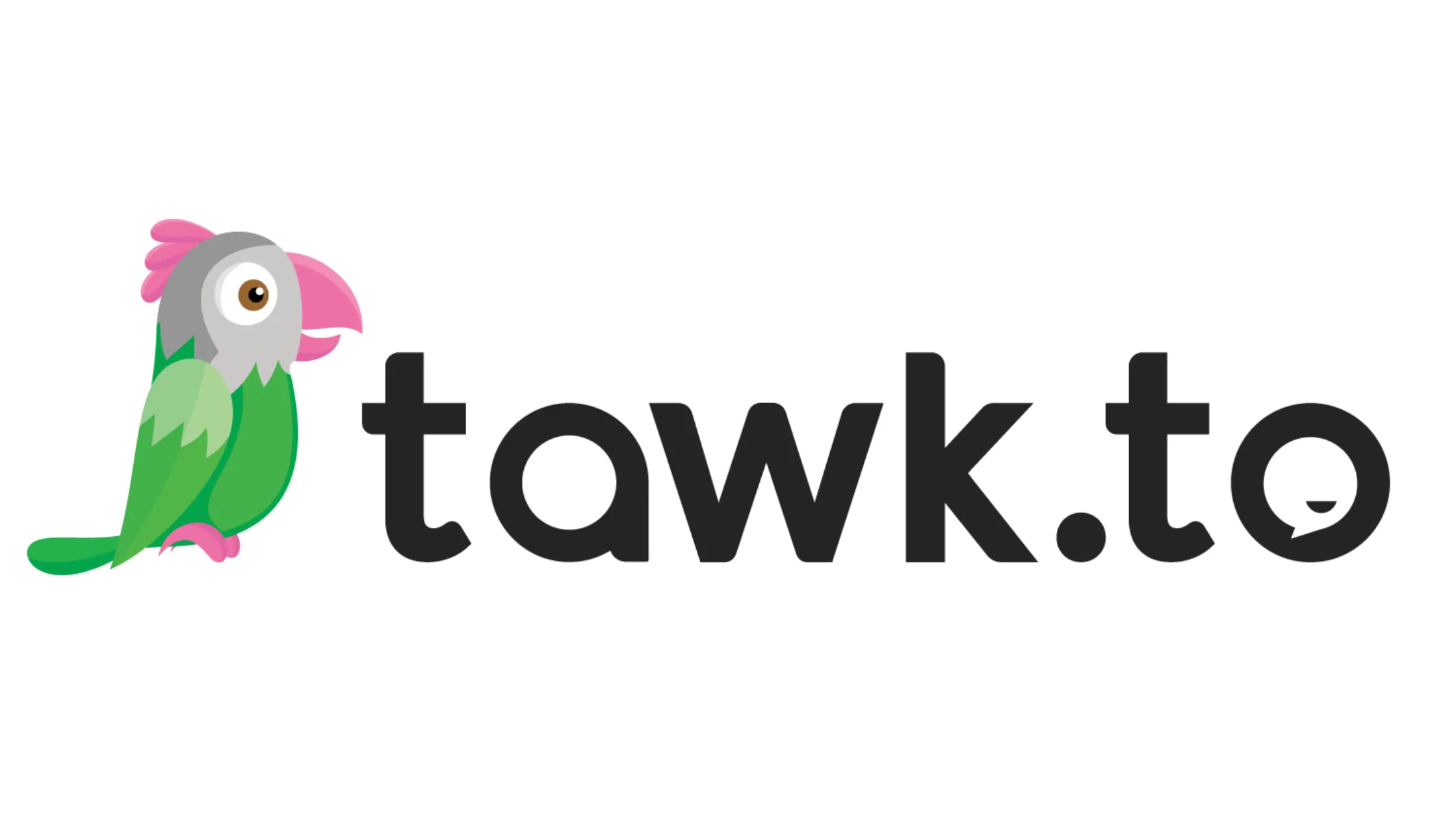
The True Cost of Technical Debt (And How to Avoid It)
Learn how technical debt can impact your startup’s growth and how to avoid it. Manage costs, maintain product quality, and keep customers happy.
As startup founders, we're often sprinting toward the next milestone—building the MVP, landing that first customer, or attracting investors. But in the rush to get things done, there’s a silent cost creeping in the background: technical debt. I’ve seen it time and time again, both in my role as CTO and through Horizon Labs, where we help startups avoid this pitfall. So, what exactly is technical debt, and how can it affect your startup? Let’s break it down and, more importantly, figure out how to avoid it.
What Is Technical Debt?
Quick Decisions, Long-Term Consequences
In the simplest terms, technical debt happens when you choose a quick or easy solution today, knowing it may cause issues down the road. Think of it like a shortcut—sure, it gets you there faster, but eventually, you’ll have to deal with the consequences. Maybe you didn’t fully comment your code, or you skipped a round of testing to meet a launch deadline. These decisions stack up, and before long, you’ll find yourself sinking time and resources into fixing or rewriting things you rushed through earlier.
Different Types of Technical Debt
- Intentional Debt: When you knowingly take on debt to get a product to market quickly. It’s a calculated risk.
- Unintentional Debt: This happens when bad code practices, poor architecture, or lack of documentation pile up. You didn’t plan for this debt, but it’s there anyway.
- Outdated Technology Debt: As new tools and frameworks emerge, your old tech stack could become outdated, leading to performance issues and high maintenance costs.
Why Technical Debt Is So Expensive
Slower Development and Higher Costs
One of the biggest problems with technical debt is that it slows down future development. Every time your engineers need to fix bugs or work around messy code, they’re not moving your product forward. What does that mean for you as a founder? Missed deadlines, delayed features, and unhappy customers. And fixing technical debt is often much more expensive than doing it right from the start.
Lost Competitive Advantage
In today’s fast-paced market, speed is everything. If your team is spending time dealing with outdated code instead of innovating, you’re losing ground to competitors. Worse yet, it could damage your ability to scale. When your product’s architecture is weak, scaling becomes a nightmare—leading to crashes, outages, and costly fixes at the worst possible times (like when you’re about to close a big client deal).
Impact on Investor Confidence
Investors love speed, but they also value sustainability. If your team constantly struggles with technical issues and delays, it can damage investor confidence. During due diligence, if an investor sees you’re dragging a lot of technical debt, they may think twice before putting their money in your business. That’s a tough pill to swallow when you’ve worked so hard to get their attention in the first place.
How To Avoid Technical Debt
Plan for Scalability Early
It’s tempting to just "get it done," especially when deadlines loom large. But trust me, building with scalability in mind from day one can save you a world of pain later. This doesn’t mean overengineering your MVP; rather, it means writing clean, modular code that can evolve as your product grows. At Horizon Labs, we emphasize using best practices even for early-stage startups to avoid nasty surprises down the road.
Invest in Documentation and Testing
One of the easiest ways to rack up technical debt is by skimping on documentation and testing. Your code might work today, but if it’s not well-documented, you (or worse, a new engineer) will spend a lot of time trying to figure out what’s going on six months from now. Testing is equally crucial. Bugs don’t just disappear; they grow, multiply, and become much harder to squash later.
Avoid the Temptation of Quick Fixes
Startups often feel pressure to ship features fast, and quick fixes might seem like the answer. But those short-term wins often create long-term pain. Make sure to build some time into your roadmap for refactoring and improving your codebase. It might slow you down a little today, but it’ll save you enormous headaches later.
Use Experienced Developers
Let’s face it: not all engineers are created equal. A team of junior devs without strong leadership can quickly amass technical debt without even realizing it. This is where having experienced developers comes in handy. At Horizon Labs, we’ve worked with startups across healthtech, marketplaces, and AI. Our team is experienced in building products that not only work but scale efficiently, allowing your startup to grow without crumbling under technical debt.
What To Do If You’re Already in Debt
Prioritize and Refactor
If you’ve already built up technical debt (and let’s be honest, most startups have), the first step is to acknowledge it and then prioritize which parts of your codebase need attention. Refactor the most critical areas first, like anything customer-facing or integral to your core business.
Bring in Experts
Sometimes, the best way to deal with a mountain of technical debt is to bring in experts. Horizon Labs has helped many startups get out from under crushing technical debt by auditing their codebase, refactoring key areas, and setting them up for future success. Whether it's rebuilding your backend or optimizing your cloud deployment, having seasoned engineers can make all the difference.
Tools and Strategies to Manage Technical Debt
Code Reviews
One of the simplest ways to prevent debt from accumulating is through regular code reviews. A second set of eyes on your code can catch issues before they become big problems. Establishing a review process will encourage your team to write cleaner, more maintainable code.
Automated Testing
Invest in automated testing early. By implementing continuous integration and automated tests, you’ll catch bugs before they hit production. This reduces the likelihood of patching things up in a rush and inadvertently increasing your debt load.
Stay Updated with New Tech
Finally, stay on top of new technology trends and frameworks. Outdated technologies often lead to higher maintenance costs, so keep your tech stack modern and adaptable. This also means fewer roadblocks when scaling your product.
The Hidden Costs of Ignoring Technical Debt
Impact on Team Morale
One of the lesser-known but very real costs of technical debt is its impact on team morale. Engineers, especially those passionate about their craft, thrive when they’re building great products—not when they’re constantly patching up broken code. If your team is regularly firefighting technical debt, they’ll likely feel frustrated and burned out. It’s hard to stay motivated when every day feels like you’re just trying to keep the ship from sinking. In the long run, this can lead to high turnover, which is costly in terms of both time and money.
Missed Market Opportunities
Technical debt doesn’t just slow down your internal processes; it can actually cost you market opportunities. Imagine you’re about to launch a major new feature that could give you an edge over competitors, but your product’s infrastructure can’t handle the load, and your team is too bogged down with maintenance work to move quickly. You could end up missing your window of opportunity. In fast-moving markets like tech, timing is everything. When technical debt slows you down, it could be the difference between being first to market or becoming an afterthought.
Customer Dissatisfaction
Customer satisfaction is another area where technical debt can have a ripple effect. When your product isn’t functioning as smoothly as it should, customers notice. Bugs, performance issues, and slow feature updates can erode trust and lead to higher churn rates. Customer expectations are only getting higher, and if you’re constantly trying to fix things instead of delivering new value, you’ll struggle to retain your users. As the saying goes, it’s much harder (and more expensive) to win back a lost customer than to keep an existing one happy.
Real-Life Examples of Startups Struggling with Technical Debt
Case Study: A Startup Stuck in the Weeds
One of the startups we worked with at Horizon Labs—a fast-growing e-commerce company—came to us with a product that had grown rapidly, but they hadn’t accounted for scalability. Their initial MVP had been rushed to market with a bare-bones backend, and as their user base expanded, so did the problems. Servers crashed frequently, users complained of slow load times, and the dev team was in constant crisis mode. Every new feature they wanted to roll out required weeks of patchwork fixes to the underlying infrastructure.
By the time we stepped in, the product had become a tangled web of quick fixes and workarounds. It took a full audit and months of refactoring to get their system stable. Had they invested just a little more time and resources upfront to build a scalable backend, they could have avoided these costly delays and frustrations.
A Healthtech Startup’s Struggle to Scale
Another example comes from a healthtech startup we supported. They had a solid MVP but needed to quickly scale to meet the demands of their growing user base. Unfortunately, their code was littered with technical debt. Features had been added without much thought to long-term sustainability, and their database architecture was outdated. This caused massive headaches as they tried to scale, resulting in delays that hurt their market momentum.
By working closely with their team, we were able to clean up their codebase, implement more modern solutions, and set them on a path to scale efficiently. But again, the costs—in terms of both time and money—could have been avoided if they had approached things differently from the beginning.
How to Prevent Technical Debt from Accumulating
Make Technical Debt a Priority from Day One
It’s tempting to dismiss technical debt as something you’ll deal with “later,” but the reality is that “later” tends to come sooner than you think. As a founder, you have to balance the need for speed with the need for sustainability. One way to do this is to make technical debt a part of your conversations from the start. Ensure your team is aware of it and that they’re thinking critically about how their decisions today will impact the future.
Set Realistic Timelines
Another way to avoid technical debt is by setting realistic timelines. Rushed work is one of the biggest contributors to bad code and shortcuts that create debt. When you give your team the time and space to write clean, maintainable code, you significantly reduce the likelihood of technical debt building up. At Horizon Labs, we work closely with founders to create realistic roadmaps that allow for quick development without sacrificing code quality.
Create a Culture of Refactoring
Regular refactoring is one of the best ways to keep technical debt in check. Encourage your engineers to refactor old code regularly rather than allowing it to accumulate. This doesn’t have to mean stopping everything to rewrite the entire codebase, but setting aside time each sprint to clean up and optimize code can go a long way. We often integrate refactoring into the development process with our clients, making sure that the code we write today won’t become tomorrow’s technical debt.
Horizon Labs: Your Strategic Partner to Avoid Technical Debt
At Horizon Labs, we understand the pressures startup founders face to ship fast and innovate continuously. With over 15 years of experience, our team has built scalable, maintainable products across industries like healthtech, AI, and e-commerce. We specialize in helping startups like yours avoid the pitfalls of technical debt, delivering solutions that set you up for long-term success.
Want to learn more? Reach out to us at info@horizon-labs.co or schedule a call at https://www.horizon-labs.co/contact. Let’s build something amazing—without the technical headaches.
Frequently Asked Questions (FAQs) about Technical Debt:
Q: How does technical debt affect a startup's ability to attract talent?
A: Technical debt can significantly impact a startup's ability to hire top-tier engineers. High levels of technical debt lead to a frustrating work environment where engineers spend more time fixing legacy issues rather than innovating. Talented developers prefer to work on challenging, forward-thinking projects, and if your codebase is full of quick fixes and poorly implemented solutions, it can deter skilled professionals from joining your team.
Q: Can technical debt impact a startup’s valuation during an acquisition or investment?
A: Yes, technical debt can reduce a startup's valuation during acquisition or investment rounds. During due diligence, potential investors or buyers will inspect your codebase, and if they find significant technical debt, they may see it as a liability. This could lead to lower offers, or even jeopardize the deal altogether. Fixing technical debt before these rounds can improve your chances of a better valuation and smoother negotiations.
Q: Is there ever a situation where technical debt is beneficial for a startup?
A: In some cases, intentionally taking on technical debt can be a strategic move for a startup, especially when time-to-market is critical. If you need to launch quickly to secure funding or beat competitors, technical debt can be an acceptable risk. However, it’s important to manage it carefully, with a plan to address it before it becomes overwhelming.
Q: How can I measure the technical debt in my startup’s codebase?
A: Measuring technical debt can be done using a combination of code quality metrics and team feedback. Tools like SonarQube, Code Climate, and static code analyzers can help identify areas of poor quality or complexity in your code. Additionally, regular feedback from your development team can give you insight into how much time they spend managing technical debt versus building new features.
Q: How long does it take to pay off technical debt once it accumulates?
A: The time it takes to pay off technical debt varies depending on the severity of the debt and the size of your team. Small amounts of technical debt may take a few sprints to clean up, but significant debt could take months or even years to fully resolve. The key is to address it incrementally—focus on refactoring critical parts of the codebase first and continuously improve over time, rather than trying to fix everything all at once.
Q: Can a non-technical founder effectively manage technical debt?
A: Yes, non-technical founders can play an important role in managing technical debt by setting clear priorities and fostering a culture of clean code. While they may not be directly involved in coding, they can work with their technical team to ensure that technical debt is regularly reviewed, refactored, and prioritized alongside new feature development. Understanding the financial and operational impacts of technical debt will help non-technical founders make informed decisions.
Q: What are some common signs that my startup has accumulated too much technical debt?
A: Common signs include longer development cycles, increased bugs, difficulty onboarding new developers, and frequent downtime or performance issues. If your team spends more time maintaining and fixing code than developing new features, it's a strong indication that technical debt is getting out of control.
Q: How can startups avoid technical debt while building an MVP?
A: While speed is critical in building an MVP, avoiding technical debt involves a few key practices: write modular, maintainable code, document everything, and avoid cutting corners on testing. It’s also helpful to plan for scalability in your architecture, even if you won’t need it immediately. Collaborating with experienced engineers who understand startup pressures can help you build an MVP that minimizes technical debt from the outset.
Q: Can technical debt affect customer satisfaction?
A: Yes, technical debt can have a direct impact on customer satisfaction. When technical debt leads to product bugs, slow performance, or frequent downtime, it frustrates users and can erode trust in your brand. If customers experience issues with your product that go unresolved because of underlying technical debt, they are more likely to churn and leave negative reviews, which can damage your reputation.
Q: How does technical debt influence the speed of innovation in a startup?
A: Technical debt slows down innovation because developers spend more time fixing existing issues or working around inefficient code instead of building new features or improving the product. This drag on progress means it takes longer to roll out updates, integrate new technologies, or pivot to meet market demands. Over time, the compounding effect of technical debt can cripple your ability to keep up with competitors.
Q: What role does technical leadership play in managing technical debt?
A: Strong technical leadership is crucial in managing and preventing technical debt. A CTO or technical lead sets the tone for how code is written, reviewed, and maintained. They can implement best practices, enforce code reviews, and encourage a culture of refactoring and clean code. Without proactive leadership, technical debt can grow unchecked, leading to bigger problems down the road.
Q: Can technical debt be completely eliminated?
A: In most cases, it’s unrealistic to eliminate technical debt entirely, especially in fast-paced startups. However, it can be effectively managed. By regularly addressing technical debt, setting aside time for refactoring, and adopting best coding practices, you can keep it at manageable levels and prevent it from becoming a major roadblock.
Q: What is the difference between technical debt and normal maintenance?
A: Technical debt refers to shortcuts or decisions made during development that create future work or problems, while normal maintenance involves routine tasks to keep the code running smoothly, such as updates, patches, and minor improvements. Technical debt is often a result of rushed or poor decisions, whereas maintenance is a planned and necessary part of managing any software product.
Q: How can I communicate the risks of technical debt to non-technical stakeholders?
A: Communicating technical debt to non-technical stakeholders can be challenging, but it’s important to explain the long-term risks in terms they understand. Frame technical debt as an investment that, if ignored, will result in higher costs later. Use analogies, like comparing it to neglecting regular maintenance on a car—eventually, the repairs will be more expensive and could lead to a breakdown. Highlight how technical debt affects timelines, budgets, and the ability to deliver new features.
Q: Are there specific industries more prone to technical debt than others?
A: While any industry can accumulate technical debt, industries that are heavily regulated or require frequent updates (like fintech, healthtech, or marketplaces) tend to face more pressure to ship quickly and are therefore more prone to technical debt. The need to meet customer demands and regulatory requirements under tight deadlines often leads to rushed solutions that can result in technical debt if not managed carefully.
Q: What are some early warning signs that my startup is about to accumulate significant technical debt?
A: Early warning signs include rushed code commits, skipped testing phases, or pushing features live without thorough documentation. If your team starts to cut corners in the interest of speed, especially on core components of your product, that’s a red flag. Additionally, if engineers begin expressing frustration with how the codebase is structured or how difficult it is to work with, it’s likely that technical debt is already beginning to pile up.
Q: What is the role of agile methodologies in managing technical debt?
A: Agile methodologies can help manage technical debt by promoting continuous delivery and regular iteration. With agile, technical debt is addressed incrementally, allowing for ongoing refactoring and improvements rather than letting issues accumulate over time. Agile practices also encourage frequent feedback loops, which helps teams catch technical debt early and build in time for maintenance and improvements within each sprint.
Need Developers?
We help companies build ideas into apps their customers will love (without the engineering headaches).
















For Startups & Founders
We've been founders ourselves and know how valuable the right communities, tools, and network can be, especially when bootstrapped. Here are a few that we recommend.

Mistakes to Avoid When Building Your First Product
Learn the key mistakes founders make when building their first product—and how to avoid them for a faster, smoother launch.
Read more
The Rise of AI in Product Development: What Startups Need to Know
Learn how AI is transforming product development for startups. From MVPs to scaling, here’s what founders need to know in today’s AI-driven world.
Read more
No-Code vs. Custom Development: Which is Right for Your Startup?
Weighing no-code vs. custom development? Learn which is right for your startup depending on stage, budget, and product complexity.
Read more
What is Mixpanel?
Learn how Mixpanel helps startups track user behavior to improve products and accelerate growth with clear data-driven insights.
Read more
How Tawk.to Can Boost Your Startup’s Customer Support Game
Learn how Tawk.to can benefit startups by enhancing customer support and engagement. Perfect for early-stage founders!
Read more
Grow Your Startup With Anthropic's AI-Powered Tools
Discover how Anthropic's cutting-edge AI tools can accelerate your startup's success. Learn about their benefits and see why they can be trusted by startups.
Read more
What is Data-Driven VC?
Learn what a data-driven VC means and how such investors can benefit your startup’s growth and fundraising journey.
Read more
What is Blockchain?
A beginner-friendly guide on blockchain for startup founders, covering key concepts, benefits, challenges, and how to leverage it effectively.
Read more
What is Cybersecurity?
Learn cybersecurity basics tailored for startup founders. Understand key risks, best practices, and how to protect your startup from tech threats.
Read more
What is Seedcamp?
Learn what Seedcamp is, how its European seed fund and accelerator program work, and how founders can use its capital, mentorship, and network to scale their st
Read more
What is AngelList?
AngelList is a prime platform connecting startup founders to investors, talent, and resources to accelerate early-stage growth.
Read more
What is 500 Startups?
Learn what 500 Startups (now 500 Global) is, how its accelerator and seed fund work, and when founders should consider it—plus tips for early-stage startups.
Read more.png)